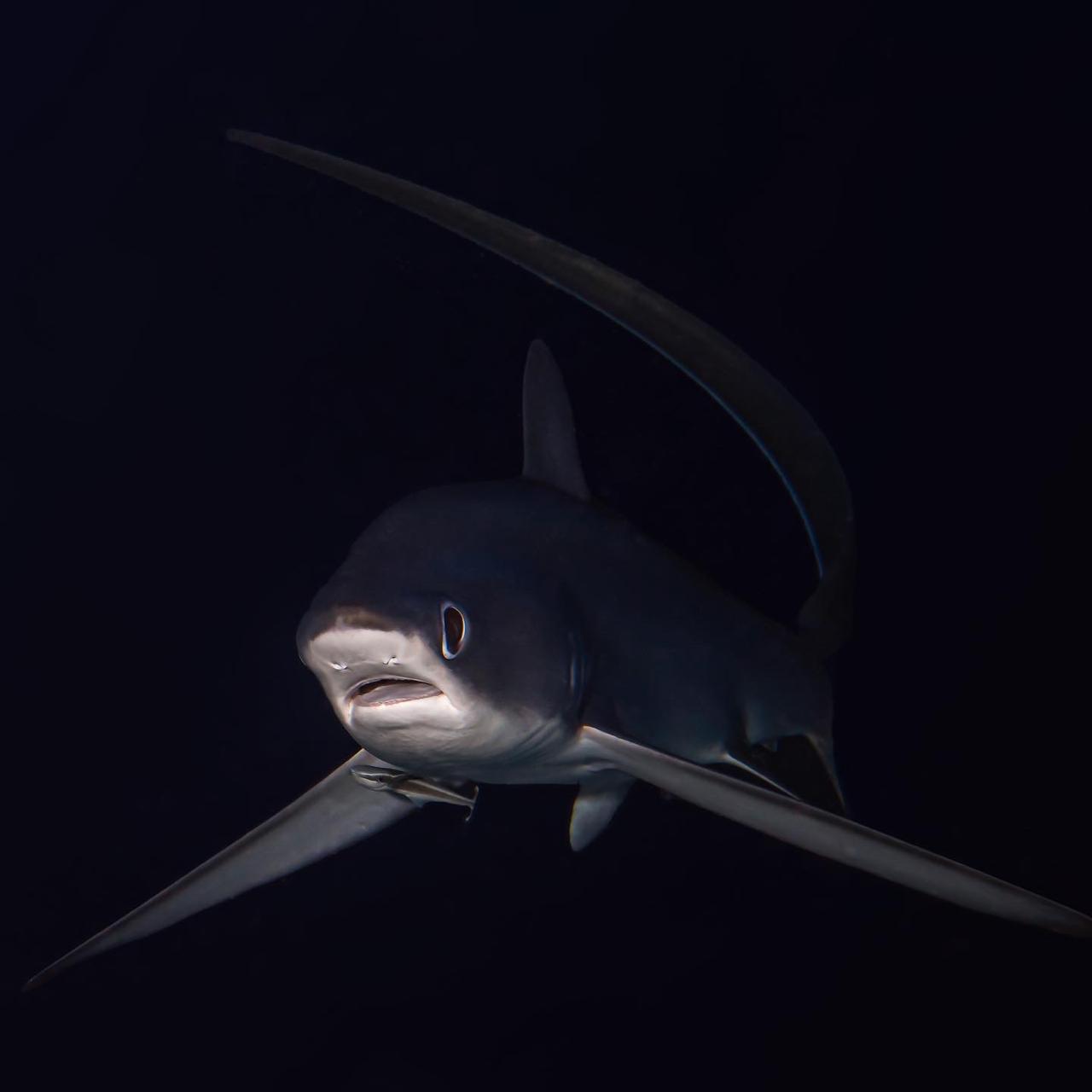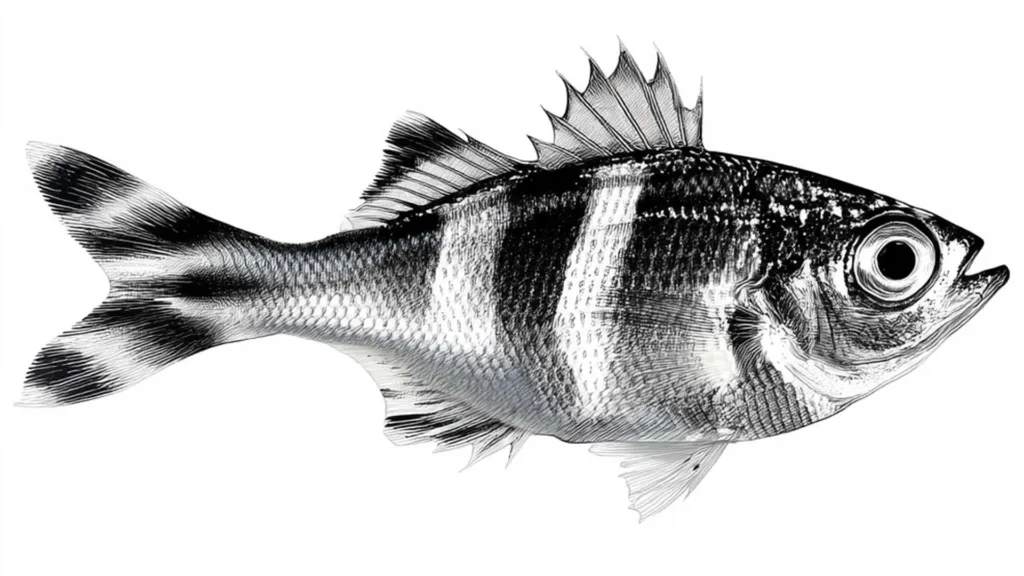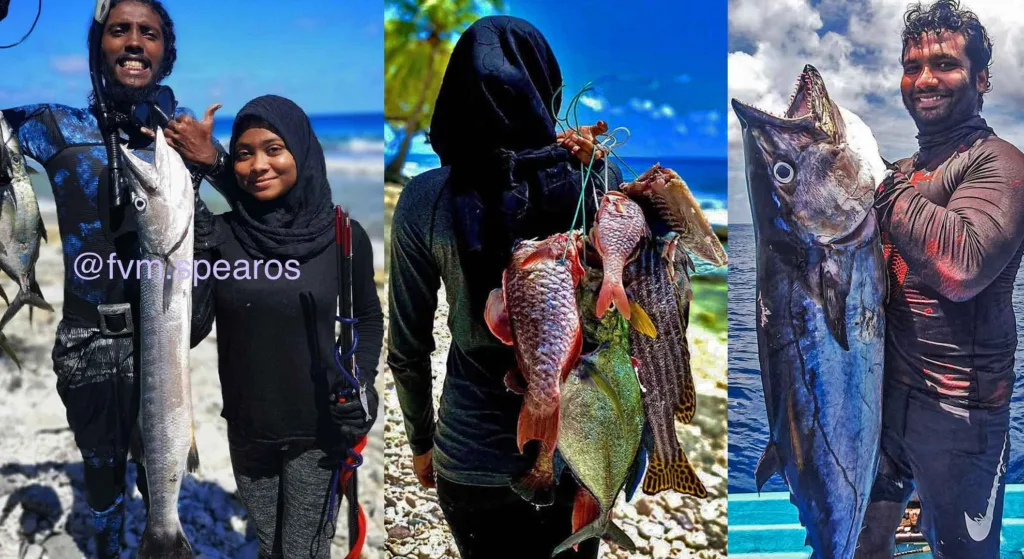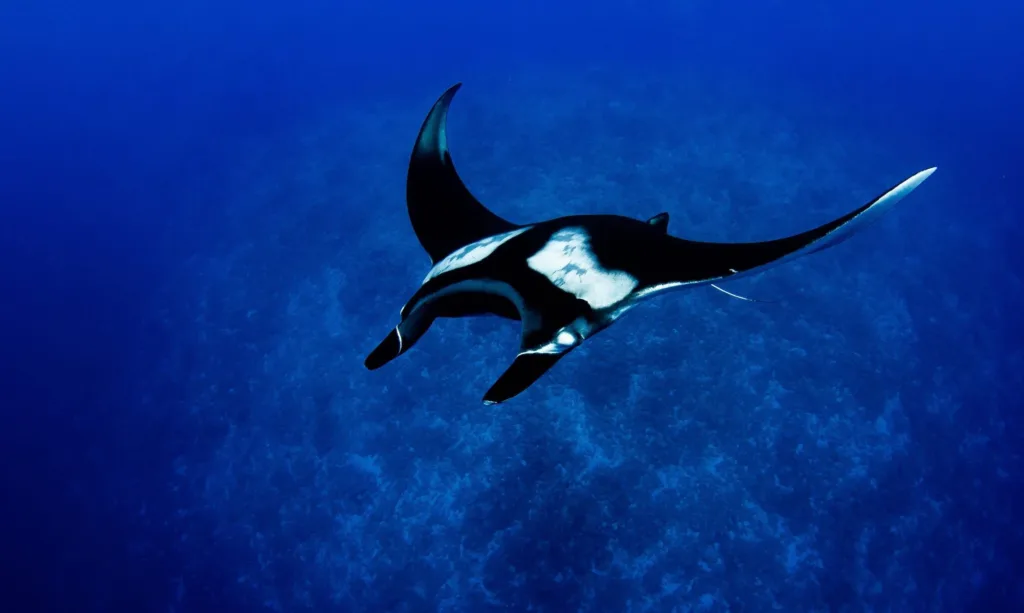
I remember our late uncle Abdulla Rafeeq detailing the strikes on the bait we used to catch yellowfin tuna. “E jehee—It has struck.” He used this term when he felt a strike on his fishing line. We inquired as to the identity of the fish. And he told us they were ‘nagul meyre,’ which means thresher sharks (Alopias spp.).
According to him, they hit with the tail first and then might eat the bait. He described situations in which sharks hooked themselves while whipping on the bait. I never saw a thresher shark caught on a fishing boat while I was at Fuvahmulah. We had no idea how special our sea was, including this gorgeous deep-diving fish.
The unique splendor of our ocean has just lately come to light, thanks to the recent surge in scuba diving, and this shark is just one of the many well-known inhabitants of this ecosystem. I love this fish the most because of its unusual appearance and distinctive tail. In my mind, it embodies the regal ocean prince. Its aquatic movements create the illusion of a regal figure entering or departing the vicinity.
The four steps of “tail-whipping” by a thresher shark include preparation, striking, wind-down recovery, and prey gathering. During the preparation phase, overhead tail slaps are initiated by lunging toward intended prey (Galoustian, 2024).
Florida Atlantic University carried out a study last year on extreme body bending in thresher sharks in partnership with the Apex Predators Program, Northeast Fisheries Science Center, and National Oceanic and Atmospheric Administration (NOAA) and discovered how thresher sharks bend their bodies. This study examined vertebrae from the head and tail ends of the body.
They examined each vertebra’s internal architecture with CT scanning. The results revealed that their vertebrae are made up of mineralized architecture. Furthermore, these features change on the front and back of their bodies. This distinctive anatomical feature aids in their typical tail-whipping habit.
Jamie L. Knaub, a doctoral graduate student in FAU’s Department of Biological Sciences within the Charles E. Schmidt College of Science, stated that anatomy and microstructure of common thresher sharks differed significantly across developmental groups, including embryonic, juvenile, and adult sharks. He explained that the shark’s vertebrae vary in structure, and the amount and distribution of minerals support the mechanical needs of tail-whipping. According to Marianne E. Porter, Ph.D., senior author and associate professor in FAU’s Department of Biological Sciences, the vertebra near the tail supports above tail whips.




